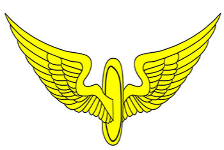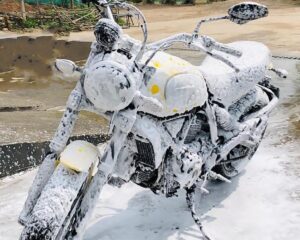Fundamental Safety Tips Every Motorcycle Rider Should Practice

Many who prefer to journey on two wheels agree that freedom and independence are the best excuses to ride. Motorcycling allows you to travel open roads, explore new places, and experience the world uniquely and excitingly.
The sense of adventure, the thrill of speed, and the importance of community that comes with being part of the motorbike neighbourhood are excellent reasons to transit on tows. Whether you ride for the freedom, the environment, or economic reasons, riding can be an intense and exciting personal experience.
The Incredible and Unforgiving Motorbike
In the US, motorcycles account for 14% of all traffic fatalities despite making up only 3% in 2020. In Great Britain, despite making up just 1% of all road users in 2016, riders were involved in about 18% of fatalities.
The physical qualities of the motorcycle, the same attributes which generally give considerable pleasure, simultaneously make you and your passenger vulnerable.
Rider error or inexperience is often cited as a leading cause of motorcycle accidents. This can include factors such as lack of proper training, lack of experience on the road, and failure to judge speed and distance correctly.
Regardless of age and skill level, you must continue to accumulate experience and minimize errors to reduce the risk of accidents. The myth claiming age and experience are enough is inaccurate. Fatalities involving US riders 55 and above in 2020 increased from 3% in 1975 to 27%.
Given these figures, motorcycle safety should be your top priority. We’ve put together a list of essential safety tips you can immediately implement to boost your security.
Basic Safety Tips Every Motorcycle Rider Should Practice
- Ride on the defensive: Defensive riding is an essential practice for you to develop because it helps reduce the risk of accidents and enhances overall safety on the road.
- Get proper training and education: If optional, enroll in a motorcycle safety course to learn the appropriate motorcycle operating techniques and become familiar with traffic laws and regulations.
- Practice regularly: Regularly practising your riding skills, such as braking, turning, and manoeuvring, will help you become more confident and competent.
- Start with a small and manageable motorcycle: If you’re new to riding, start with a smaller, more manageable bike that is easier to control.
- Be aware of your surroundings: Always pay attention to your surroundings, including other vehicles, pedestrians, road conditions, and weather conditions.
- Check the weather before leaving: Your ride may be hampered by snow, ice, or rain. If your skill level makes you uncomfortable riding in bad weather, pick a different day.
- Avoid distractions: Avoid distractions while riding, such as using your cell phone or listening to music at a high volume.
- Wear protective gear: Always wear appropriate protective gear, such as a helmet, gloves, and sturdy boots or shoes, to reduce the risk of injury in the event of an accident.
- Stay visible: You can’t presume the other drivers can see you. In most motorcycle accidents, other drivers fail to see the motorbike. Here are a few strategies for staying visible: Drive with your headlights on, even during the day, wear reflective or visibly bright clothes, stay out of other driver’s blind spots, and always use your turn or hand signals.
- Ride within your abilities: Don’t push yourself beyond your limits, and always ride at a speed that is comfortable for you and within your capabilities.
- Take it slow: Don’t rush into more advanced riding techniques or challenging road conditions. Start with accessible, low-traffic routes and gradually build up to more challenging rides.
- Be aware of your mental and physical state: If you are tired or stressed, it’s best to wait until another time to ride.
- Avoid riding under the influence of drugs or alcohol: It impairs your ability to make sound decisions and react quickly to changing situations.
- Regularly maintain your motorcycle: Check tire pressure, brakes, lights, and other components to ensure everything is in good working order. Read and understand your motorcycle’s owner’s manual. It will help you know the specific features and capabilities of the bike.
- Before you ride, check your bike: Before every ride, examine your brakes, tire pressure, mirrors, handlebars, turn signals, taillights, headlights, horn, fuel, and oil.
- Take advanced riding class: You will develop your abilities by taking progressive riding lessons. You will pick up control tricks, braking methods, and complex turning manoeuvres. These new techniques will also allow you to maximize your motorbike abilities.
- Keep a first-aid kit on you: It is a good idea to keep a basic first-aid kit on your motorcycle in case of an accident. As a minimum, Band-Aids, bandages, gauze, adhesive tape, and hand sanitizer should all be included in your kit.
- Ride with reliable, experienced riders: Riding with more experienced riders can help you learn from their mistakes and pick up tips on becoming better riders.
- Keeping a safe distance: Keeping a safe distance allows you more time to react in an unexpected situation, such as a sudden stop or an obstacle in the road.
In A Nutshell
Practising defensive riding with an evolution in your ability and knowledge is essential to enhancing motorcycle safety and reducing the risk of accidents. By being aware of your surroundings, anticipating potential hazards, and practising safe riding techniques, you can help ensure a safer and more enjoyable riding experience.



